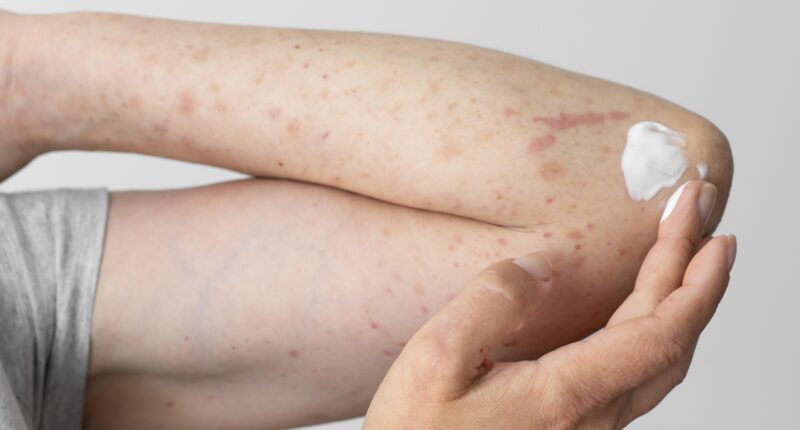A look at “Understanding Risk Factors for Skin Ulcers” Skin ulcers can be painful and debilitating, often requiring careful attention and treatment. Understanding the risk factors associated with skin ulcers is crucial for preventing and managing these conditions effectively.
According to research 48 deaths (7% death rate) among 690 adolescents and young adults with spina bifida in South Carolina from 2000–2010. The authors used Medicaid and other administrative data and a retrospective cohort design that included people with spina bifida identified using ICD-9 codes. Cox regression models with time-dependent and time-invariant covariates, and Kaplan–Meier survival curves were constructed.

People who had their first skin ulcer during adolescence had higher mortality than those who had the first skin ulcer during young adulthood (P = .0002; hazard ratio = 10.70, 95% confidence interval for hazard ratio: 3.01, 38.00) and those without skin ulcers, controlling for other covariates. In this article, we’ll delve into the causes, symptoms, and treatment options for skin ulcers, shedding light on how to maintain healthy skin and overall well-being.
What are Skin Ulcers?
Skin ulcers commonly known as bedsores or decubitus ulcers localized wounds that affect the outermost layer of the skin. They can vary in size and severity, and they are typically caused by impaired blood circulation, pressure, or other underlying health conditions.
A skin ulcer is an open sore on the skin that can be caused by a variety of factors, including poor blood circulation, pressure, infection, and underlying medical conditions. Skin ulcers can occur anywhere on the body, but they are most common on the legs, feet, and hips.
Ulcers develop in stages
In stage 1 the skin is red with soft underlying tissue. In the second stage the redness of the skin becomes more pronounced, swelling appears, and there may be some blisters and loss of outer skin layers. During the next stage, the skin may become necrotic down through the deep layers of skin, and the fat beneath the skin may become exposed and visible. In stage 4, deeper necrosis usually occurs, the fat underneath the skin is completely exposed, and the muscle may also become exposed. In the last two stages the sore may cause a deeper loss of fat and necrosis of the muscle; in severe cases it can extend down to bone level, destruction of the bone may begin, and there may be sepsis of joints.
Causes
Skin ulcers can be caused by prolonged periods of poor blood flow to an area of the body. This can occur as a result of infection, immobility, or conditions affecting the blood vessels like diabetes. When blood flow to the skin is restricted, it can make it difficult for the body to heal wounds and sores. Other common causes of skin ulcers include:
- Diabetes: People with diabetes are more likely to develop skin ulcers because high blood sugar levels can damage blood vessels and nerves.
- Venous insufficiency: This condition occurs when the veins in the legs do not work properly, causing blood to pool in the legs. This can lead to swelling and pressure on the skin, which can make it more likely to develop ulcers.
- Arterial insufficiency: This condition occurs when the arteries in the legs do not supply enough blood to the tissues. This can lead to poor wound healing and the development of ulcers.
- Pressure: Prolonged pressure on the skin can also lead to the development of ulcers. This is why people who are bedridden or who have to sit for long periods of time are at increased risk of developing skin ulcers.
- Infection: An infection can also cause a skin ulcer to develop. This is why it is important to keep wounds clean and free of infection.
- Other medical conditions: Some other medical conditions that can increase the risk of developing skin ulcers include rheumatoid arthritis, cancer, and peripheral vascular disease.
Identifying Symptoms of Skin Ulcers
Recognizing the symptoms of skin ulcers is vital for early intervention and proper treatment. The symptoms of a skin ulcer vary depending on the type and severity of the ulcer. However, some common symptoms include:
- Pain
- Swelling
- Redness
- Discharge
- Bleeding
- Itching
- Odor
If you have any of these symptoms, it is important to see a doctor to get a diagnosis and treatment.
Effective Treatment Approaches
Treating skin ulcers involves a multifaceted approach that addresses the underlying cause and promotes healing. The treatment for skin ulcers depends on the type and severity of the ulcer. However, some common treatments include:
- Keeping the ulcer clean and moist
- Applying dressings
- Using compression therapy
- Taking antibiotics
- Taking pain medication
- Surgery
With proper treatment, most skin ulcers can heal. However, some ulcers may take a long time to heal or may not heal completely.
Here are some tips to help prevent skin ulcers:
- Control your blood sugar if you have diabetes.
- Exercise regularly.
- Maintain a healthy weight.
- Avoid smoking.
- Keep your skin clean and dry.
- Avoid prolonged pressure on the skin.
- Use a bed or chair that provides good support.
- Change positions frequently if you are bedridden or have to sit for long periods of time.
- If you have an ulcer, take care of it properly.
Lifestyle Changes for Prevention
Balanced Diet
Eating a diet rich in nutrients promotes overall skin health and healing.
Regular Exercise
Physical activity improves circulation and supports healthy skin.
Avoiding Prolonged Immobility
Changing positions regularly reduces the risk of pressure ulcers.
Seeking Medical Attention
When to Consult a Doctor
Any non-healing sore or suspicious skin changes should prompt a doctor’s visit.
Importance of Early Treatment
Early intervention can prevent complications and promote faster healing.
Conclusion
Understanding the risk factors for skin ulcers is paramount for maintaining skin health. By recognizing the causes, symptoms, and available treatments, individuals can take proactive steps to prevent and manage these conditions effectively.
FAQs
- Are skin ulcers contagious? Skin ulcers themselves are not contagious, but underlying infections could be.
- Can I treat a skin ulcer at home? While some minor ulcers can be managed at home, it’s advisable to seek medical advice.
- Do all skin ulcers require surgery? No, many ulcers can be treated with non-surgical methods if detected early.
- Are there any natural remedies for skin ulcers? While proper wound care is essential, consult a medical professional for effective treatments.
- What’s the biggest risk factor for developing skin ulcers? Underlying health conditions, particularly diabetes and circulatory issues, pose significant risks.
You may like | The Surprising Positive Effects of Playing Bingo






